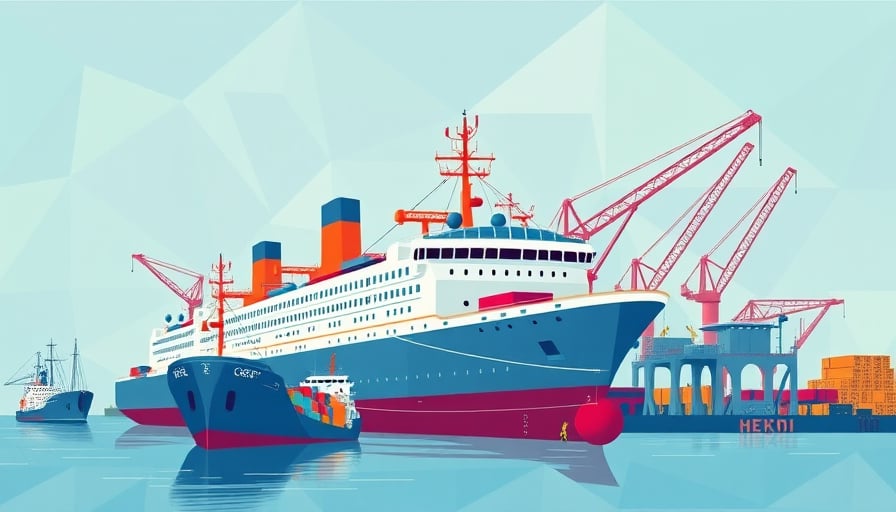Fincantieri’s Ancona Gambit: Expansion, Earnings and a Bleak Market
In the latest wave of announcements, Fincantieri SpA has unveiled a €40 million, multi‑decade concession that will re‑engineer its Ancona shipyard into a strategic naval hub. The deal, signed with the Central Adriatic Sea Port Authority, covers more than 314 000 m² of dockyard space and sets the stage for a substantial overhaul of Italy’s naval production capabilities.
The move is not a mere facelift; it is a calculated bet that the company’s shipbuilding segment—already responsible for a broad spectrum of vessels from aircraft carriers to expedition cruises—can capture a larger share of the burgeoning global market, projected to reach USD 228.82 billion by 2032. By staking a claim on Ancona’s waterfront, Fincantieri positions itself to secure future defense contracts and to cement its status as a key player in the European shipbuilding arena.
The Concession in Detail
- Scope: A multi‑decade agreement covering 314 000 m² of the Port of Ancona, with a capital outlay of €40 million.
- Objective: Modernise and expand facilities to accommodate larger naval vessels and sophisticated offshore platforms.
- Strategic Significance: Ancona’s location on the Adriatic Sea places it at the crossroads of Mediterranean maritime routes, giving Fincantieri a logistical advantage over competitors.
The concession was formally announced on 19 November 2025, with the company’s website confirming that the “shipyard development plan” had been launched. Subsequent reports from Maritime Executive and Maritime Professional echoed the same narrative, underscoring the agreement’s importance for Italy’s maritime infrastructure and for Fincantieri’s future growth.
Earnings Call Context
On 18 November 2025, Fincantieri released its Q3 2025 earnings call transcript. While the transcript is not quoted verbatim here, its timing is crucial: the announcement of the Ancona expansion follows closely on the heels of the earnings call, suggesting a deliberate effort to tie financial performance with strategic milestones. Investors, however, must scrutinise whether the company’s high price‑to‑earnings ratio of 64.057 and the steep decline from its 52‑week high (27.38 EUR) to a low of 5.58 EUR signal underlying vulnerabilities.
Market Positioning and Risks
- Stock Performance: As of 17 November 2025, Fincantieri’s share closed at 18.74 EUR, well below its recent high but still a considerable distance from the historical low.
- Capital Structure: With a market cap of approximately €6 billion, the company is sizeable but not immune to market swings.
- Sector Pressure: The broader European equity market was weak as of 19 November 2025, reflecting a cautious investor climate. In such an environment, a large capital expenditure such as the Ancona expansion could be a double‑edged sword.
Critics will point out that the €40 million investment is only a fraction of the total cost required to overhaul a shipyard capable of building modern naval vessels. Moreover, the long‑term concession does not guarantee revenue; it merely provides a platform for future contracts that may or may not materialise.
Strategic Rationale
Fincantieri’s leadership, under President Pierroberto Folgiero, has long championed the “underwater” frontier as a new arena for growth. Recent commentary in Il Nordest highlighted the company’s commitment to submarine and offshore infrastructure, positioning it to tap into the expanding market for underwater exploration and renewable energy platforms. The Ancona expansion is a concrete manifestation of this strategy, providing the physical capacity needed to deliver on these ambitions.
Conclusion
Fincantieri’s Ancona expansion represents a bold, capital‑heavy gambit aimed at securing its future in a fiercely competitive industry. While the deal promises strategic gains, it also exposes the company to significant financial risk amid a volatile market backdrop. Investors and industry observers alike will be watching closely to see whether the shipbuilder can translate this infrastructural leap into tangible earnings growth, or whether the expansion will simply add weight to an already stretched balance sheet.




